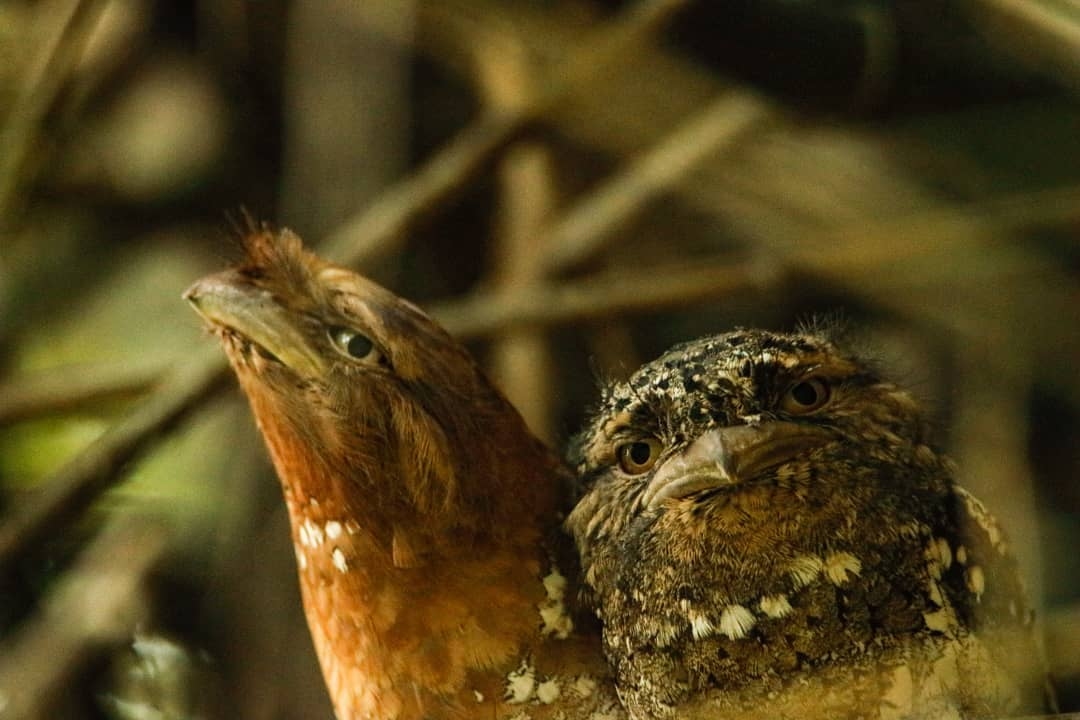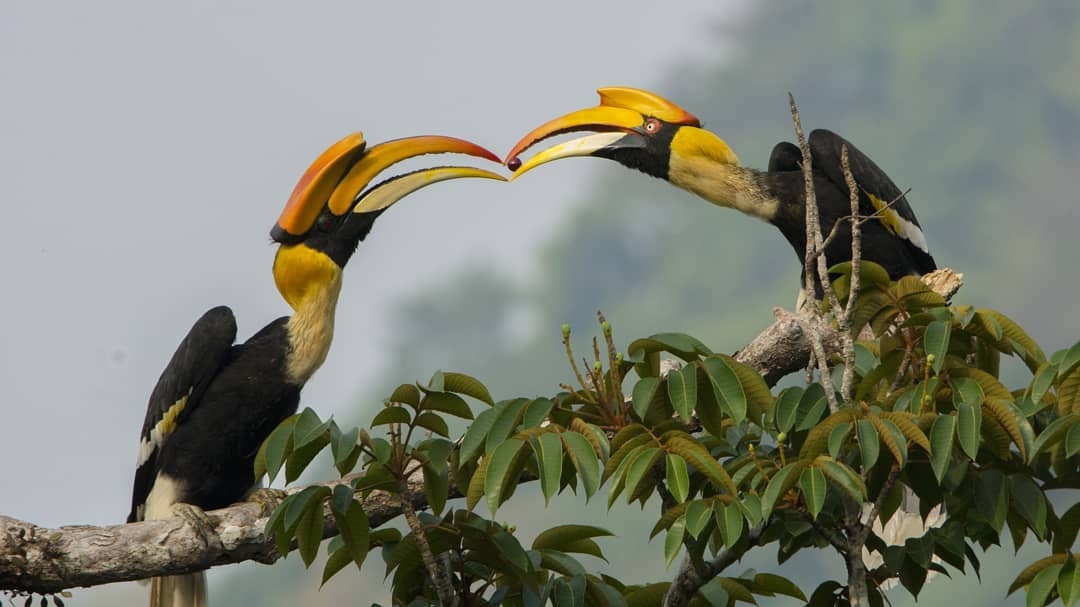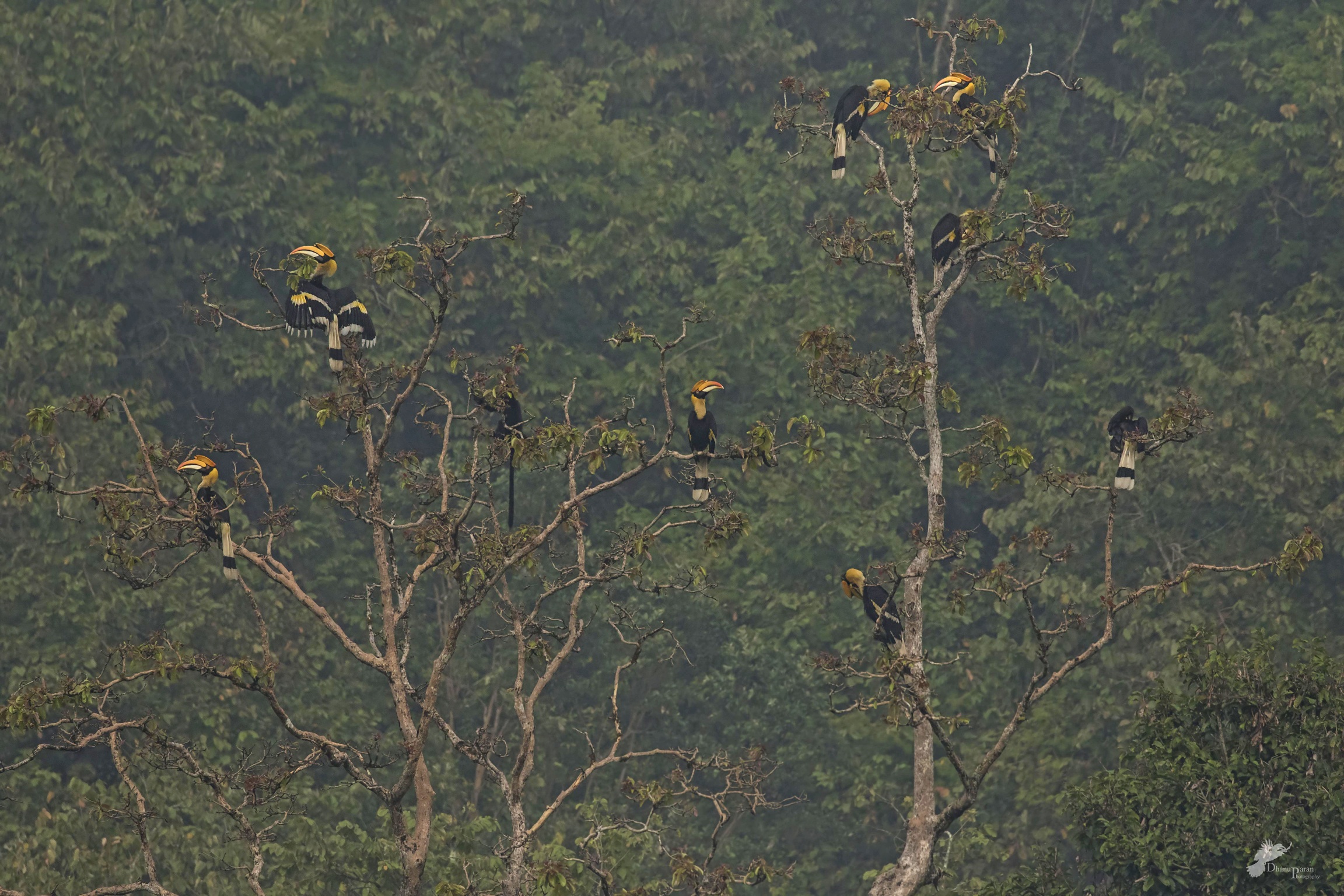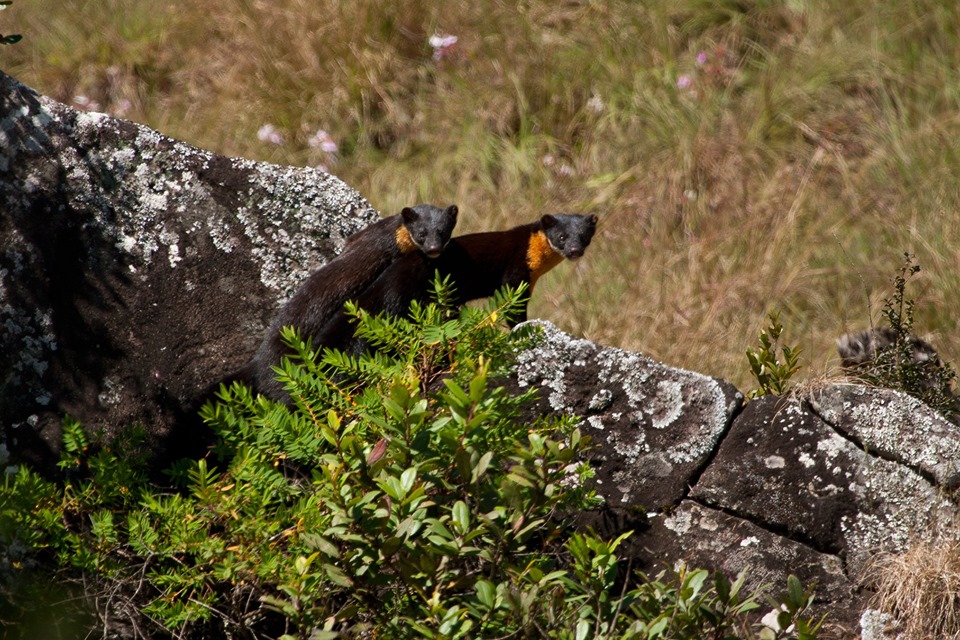In the natural world, crypsis is a strategy widely adopted by many life forms. Camouflage resembling the background surface is one way to avoid being noticed and deter predators. Walking in these forests of Anamalai Hills, one can see many examples of camouflage adopted by insects, frogs, and reptiles. Among the birdlife here, Sri Lanka Frogmouth or Ceylon Frogmouth is one such master of disguise. In India, two species of frogmouth occur, Hodgson’s Frogmouth (Batrachostomus hodgsoni) in northeast India, and Sri Lanka Frogmouth (Batrachostomus moniliger) an endemic to the Western Ghats and Sri Lanka’s biodiverse forests. The Sri Lanka Frogmouth is a nocturnal bird and belongs to order Caprimulgiformes, the same as that of nightjars.
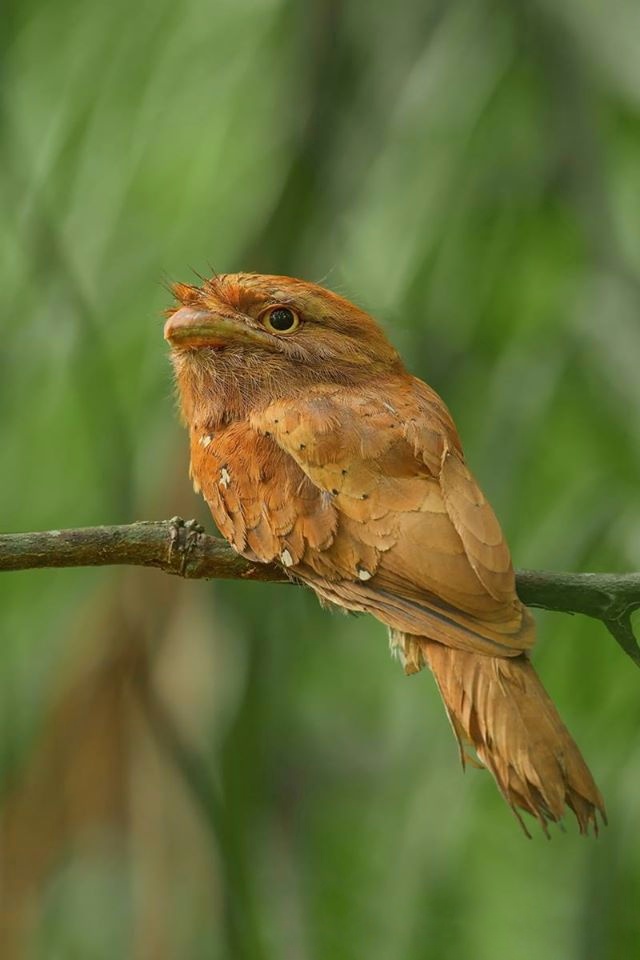
The Sri Lanka Frogmouth is about 22-23 cm long, with a large head, and has a large flattened curved bill and huge frog-like gape giving it the name. The male looks duller than the female, characterized by grey-brown with fine barring and heavily spotted. The female is more rufous or chestnut brown and is lightly spotted with white dots. Female birds also have very fine black speckles on the crown.
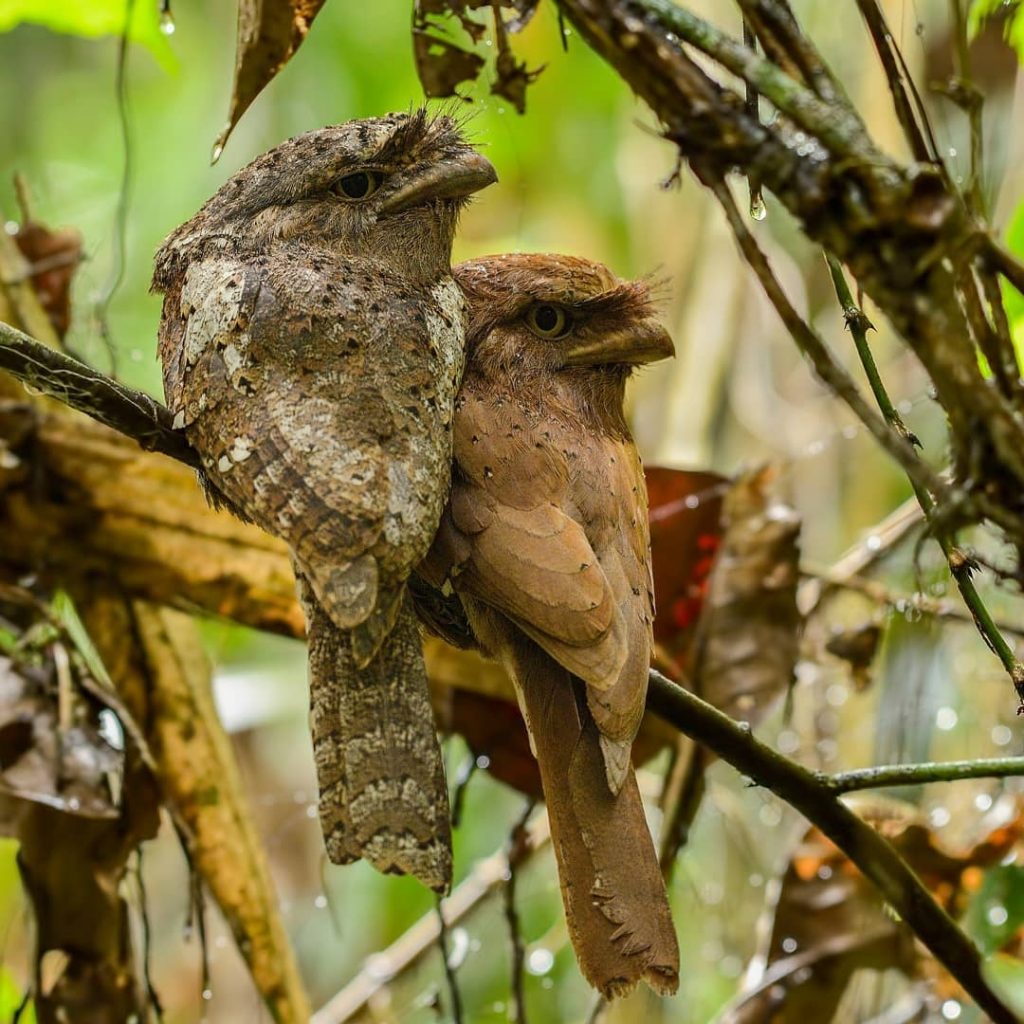
During my field days for the hornbill project with Nature Conservation Foundation, it was fun to find frogmouth on a tree in the daytime. Usually, frogmouth roosts upright on branches of trees or lower foliage, camouflaged by its cryptic plumage and appearing like a broken branch or dried leaves making it difficult to spot.
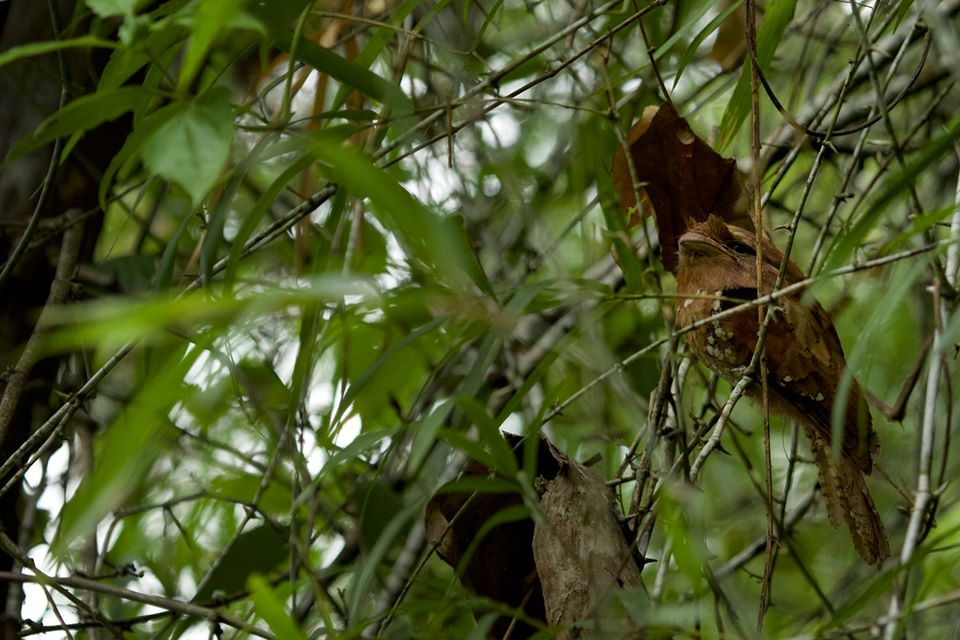
When spotted, the pair appears ‘grumpy’ due to the facial bristles, forward-facing eyes and wide frog-like gape. They are nocturnal birds, and actively hunt for insects from the forest floor and by gleaning the under-story vegetation. Crunchy grasshoppers, beetles, and moths are on their meal menu.
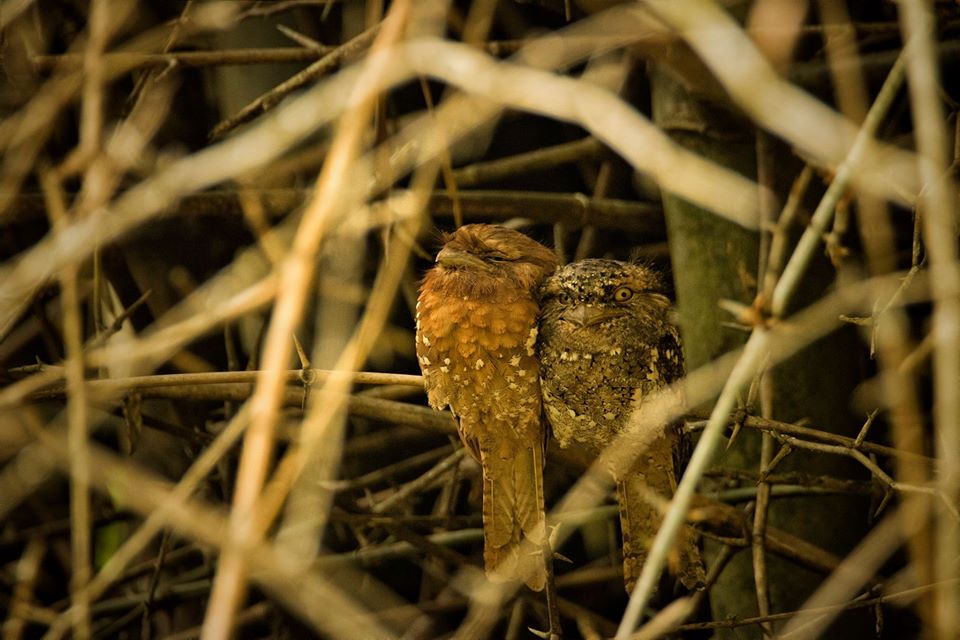
The Sri Lanka Frogmouth becomes vocal at the dusk and best located at night by its song, which is a loud descending cackly and frog-like series of Klock-klock-klock-klock-klock calls. It has the quality of sound produced by rattling pebbles. This is the call of the male and it is often answered by the female whose call is low long harsh Krrshhhh. Listening to their calls on night walks around the camps was always a delight for me during hornbill surveys in the Anamalai Hills.
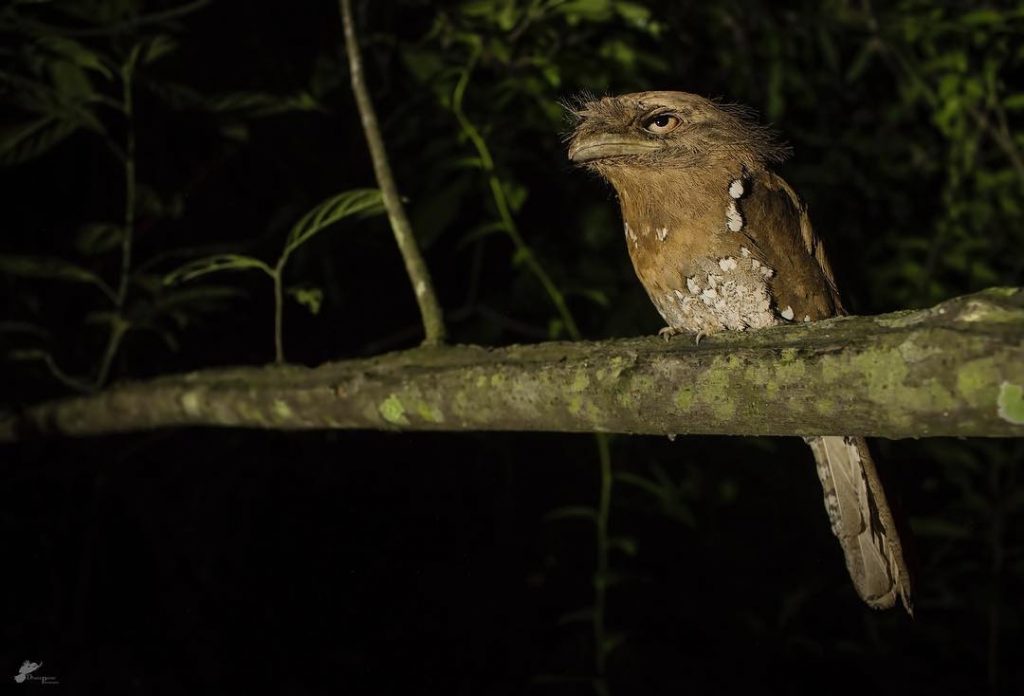
The nesting of frogmouths is as interesting as they appear. The nest is a small pad-like platform between forks of branches, lined with moss and feathers from inside. The outer surface of the nest is covered with lichens and bark, again making it very difficult to detect. Often female lays only one, white egg and both male and female share the parenting during the incubation period. The known breeding season in South India is between January to April, and in Sri Lanka is February to March.
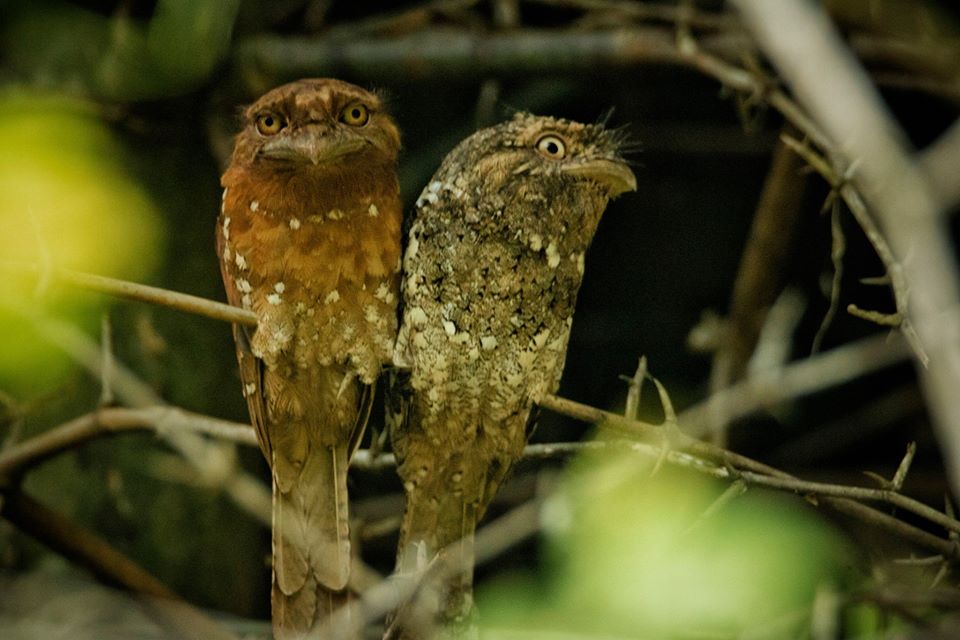
The species was thought to be restricted in the southern parts of Western Ghats, initially. But the recent reports and over 1500 observations show that the species is widely distributed across the Western Ghats. This species is found in a diverse array of habitats ranging from evergreen, dense forest, moist deciduous forest, dense undergrowth of bamboo thickets and canebrakes. Due to the wide distribution of the species, IUCN conservation status is ‘least concern’, however, the information of their population is not yet available.
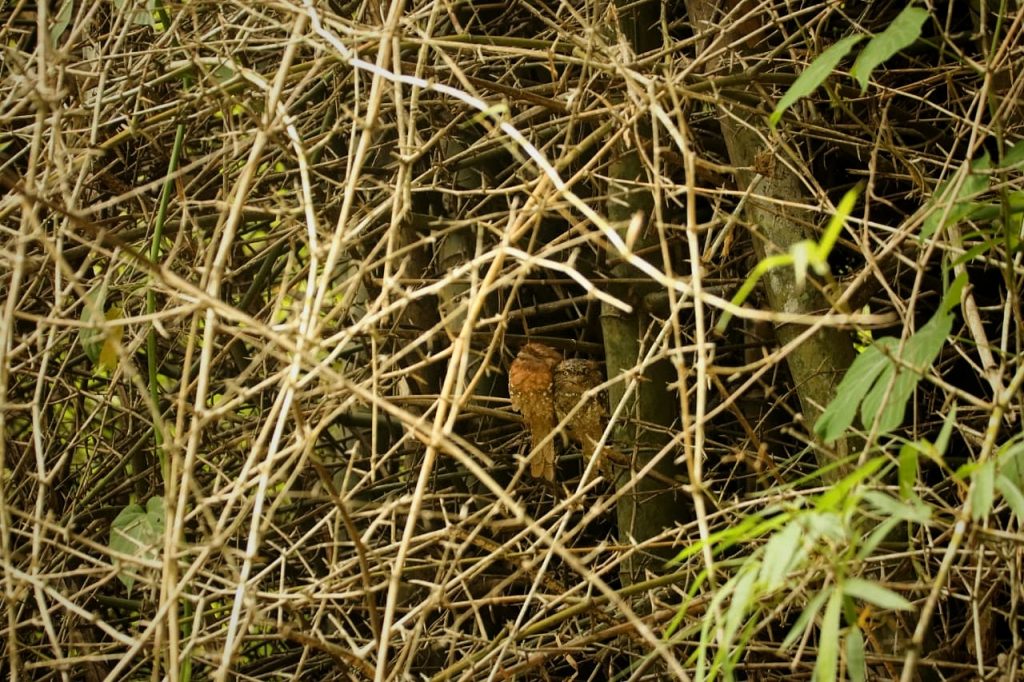
The enigmatic sightseeings of the frogmouth would bring cheers to our hornbill surveys in the forests of the Anamalai Hills, along with field staff of the Nature Conservation Foundation, Mysuru. If one team member sees it, then was always a quizzical search for a pair of frogmouths in the thickets along the trails for others in the team. The best part was to ask people to spot this iconic bird in the photo that looks like mere dry foliage in the under-story!
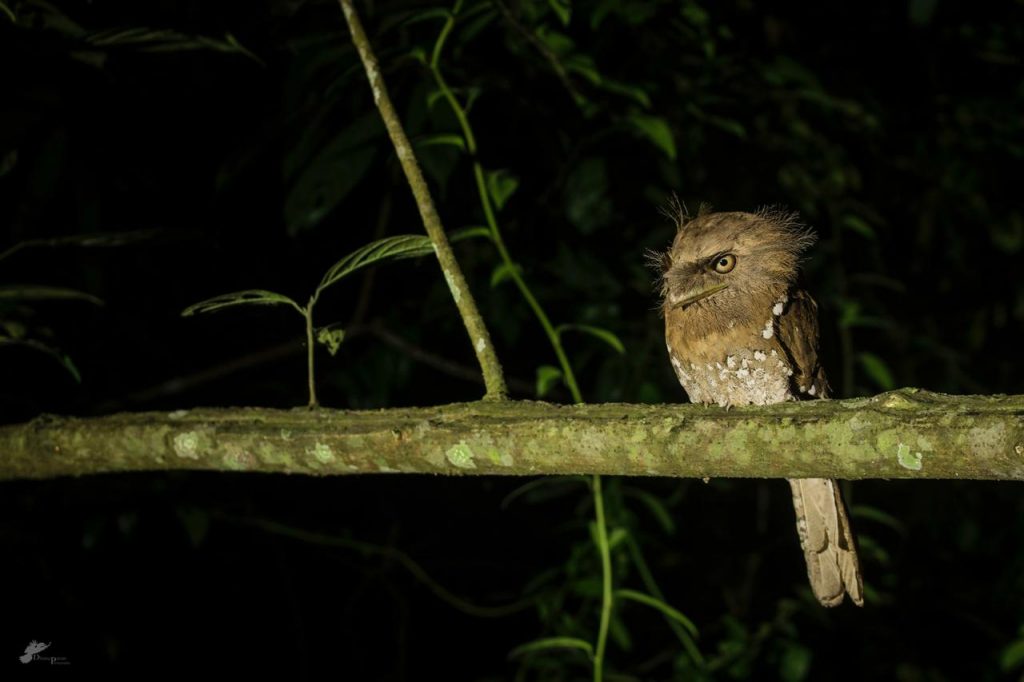
About the series – Icons of Anamalais:
A treasure house of biodiversity, the Anamalai’s region of the Western Ghats is home to a spectacular array of wild species, some rare and endemic, that are found nowhere else on Earth. “Elephants Hills” as it is literally translated, the region is one of the most picturesque landscapes in the country that hosts a broad variety of ecosystems ranging from tropical wet evergreen forests to sholas and montane grasslands to dry, scrub jungles.
Home to the large mammals like the Asiatic Wild Elephants, Indian Gaur, the endangered species like the Wild Dogs, Nilgiri Tahr, and Lion Tailed macaques, Anamalai’s is also first to be home to all 16 endemic bird species of Western Ghats.
This series of articles by The Pollachi Papyrus, celebrates the iconic birds and mammals of the Anamalai’s –a unique ecological tract and a global biodiversity hotspot that needs protection and conservation.

